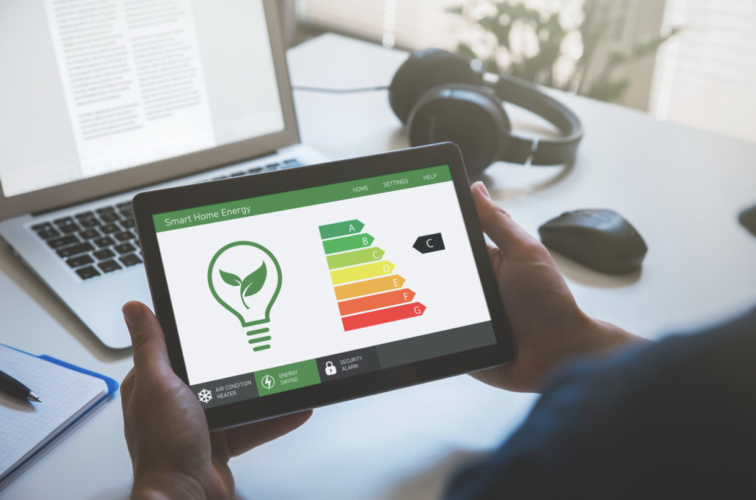Innovations in energy management are happening in the restaurant and fast-food industries at a dizzying pace. Energy efficient restaurants with solid management systems in place are lowering spend and passing those savings directly onto the customer. With a little help from the experts, you can do the same.
The History of Technological Advances In Fast Food
Since the invention of “fast food,” advancements in technology have drastically improved both the speed and quality of fast food preparation. One major development is the automation of processes such as cutting, slicing, and shredding to streamline ingredient prep. This has enabled restaurants to significantly reduce the amount of time it takes to produce ingredients, allowing them to serve customers quicker and with better consistency between each order.
Another major advancement has been the rise in temperature-controlled equipment such as deep fryers and grills. This equipment precisely controls temperatures with programmed settings rather than relying on manual temperature adjustment by staff members. It allows chefs to control their cooking times and temperatures more carefully. Cooks can also ensure that every dish comes out consistent, regardless of who is making it.
Advances in packaging technology have also played a huge role in fast food production. By introducing multi-compartment containers, staff are able to quickly compartmentalize portions while still providing clients with an attractive presentation that promotes uniformity across orders. The use of these containers ensures that all ingredients remain together during storage and transport, eliminating the need for separate utensils or plates for assembly once they arrive at their destination.
Overall, the development of technology within fast-food preparation has allowed chefs to produce food more quickly and more precisely than ever before. No one reaps greater benefit than the consumer (and the team behind the magic!)
Innovations In Energy Management Are Speeding Up, Too
In the restaurant industry, energy management is key for keeping costs low and operations running smoothly. With ever-growing technology innovations, now more than ever restaurant energy management companies are progressing forward in terms of finding new ways to manage energy in the most efficient and cost-effective way.
Smart Meters and Thermostats
Smart meters are becoming increasingly popular among restaurants. These devices allow for easier monitoring and tracking of electrical usage. Smart meters are equipped with digital displays that can inform staff of exact electricity usage at any given time so they can take the necessary steps to reduce or increase output accordingly. Additionally, these meters also come with a variety of alerts that can notify users when something needs to be addressed.
Thermal Sensors
Another innovative technique being utilized by restaurant energy management companies is advanced thermal sensing technology. It allows them to monitor temperature levels in order to maintain optimal levels throughout the space without having to increase heating or cooling based on occupancy levels. This form of temperature detection improves overall efficiency and prevents overconsumption. It can detect thermal variations throughout the premises rather than just one centralized location.
CO2 Detectors
Carbon dioxide (CO2) detectors are becoming increasingly popular in restaurants due to their ability to help reduce energy costs by monitoring and adjusting ventilation levels. The sensors measure the amount of CO2 in the air, which is made up of both natural and human-generated sources. If it detects high levels, the detector will either ramp up the ventilation level or shut down any emissions sources such as stoves or ovens. It does so until levels are at an acceptable level. This helps restaurants keep costs low. Ventilation systems are only run when necessary and energy usage is reduced when there is no need for additional air circulation. Additionally, it can also alert staff to any potential hazards such as toxic gasses, allowing for quick action if needed.
Mobile Applications and Monitoring
Energy saving initiatives have also been enabled through mobile applications. Mobile apps allow customers to keep track of their energy consumption history as well as receive notifications when certain changes need to be made in order to conserve power. This type of software also provides users with advice on how best to utilize their resources and make use of renewable sources when available.
The Power of AI for Energy Management Systems
Perhaps one of the most impressive advancements, however, comes from artificial intelligence (AI). AI algorithms combined with predictive analytics enable restaurants to better understand patterns in customer consumption. Thus, they can anticipate demand and adjust resource consumption accordingly.
By implementing such strategies, fast-food and full-service restaurants can drastically improve their energy efficiency. And GSE Pro is here to help. We partner with nationally renowned brands to tackle CO2 reduction, improve air quality, and implement ESG standards. These tactics benefit your staff and your customers equally. Give us a call or request a consultation today.






1 Comment
Great read on energy management innovations tailored for the fast-food industry. Thanks for sharing these advancements!